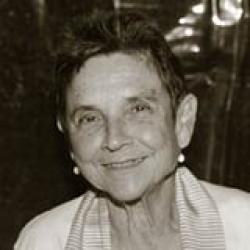1.
Is poetry, should it be, “political”? The question, for me, evaporates once it’s acknowledged that poetic imagination or intuition is never merely unto-itself, free-floating, or self-enclosed. It’s radical, meaning, root-tangled in the grit of human arrangements and relationships: how we are with each other.
The medium is language intensified, intensifying our sense of possible reality.
2.
Ghostly touch on the shoulder: dust motes of air inhaled, snatch of talk heard boarding a plane, music stored in memory. A smell provokes another sensation, a half-forgotten scene. Dream-remnant. “Room-sound,” as in recording.
Working on a draft, I move by touch through what I can’t see clearly. My finger on the shoulder of the ghost who first touched mine. As my eyes adjust to dimness the shape of what I’m doing declares itself. The poem makes its needs felt, becomes both my guide and my critic.
Behind and overall there’s the interpenetration of subjectivity and social being. Gleaning, not at first consciously selecting. Dissatisfaction, impulse to look at the world anew, scrape at the wounds, refuse popular healings and panaceas, official concoctions. I’ve learnt how much this work depends on knowing myself—including how astray I can go, have gone, but also trusting how certain poetic choices have taken me beyond any conscious knowing.
I’ve wanted to write subjective visions of objective conditions. But this sounds like a program. Say rather: Poems become suffused, as the existence, the inner life of the maker must, with what’s going on, the breaks in the assumed fabric. The makings of art are rooted in non-art labors—repetitive, toxic, body-breaking, minimum wage or less or none—that everywhere underlie those privileged creations. What you do and don’t see. What is seeing you. Eyes in the thicket, eyes in the street.
I need to reach beyond my interior decoration, biography. Art is a way of melting out through one’s own skin. “What, who is this about?” is not the essential question. A poem is not about; it is out of and to. Passionate language in movement. The deep structure is always musical, and physical—as breath, as pulse.
3.
In the culturally stunned, dystopic states of North America a poet needs a different (though no greater) kind of faith and commitment from that of poets under other cruel and t/ruthless political regimes. Faith in poetry itself, more perhaps than has been required in other, older societies. Commitment to a poetics not defined by the market, not complacent courtier verse or prose cut by template. A poetics of longing, of organic necessity.
Mayakovsky: The presence of a problem in society, the solution of which is conceivable only in poetic terms. A social command. [1] I read him as saying that for the poet the problem is insoluble by her or him alone, yet he or she feels an urgency to meet it with poetry.
That urgency—emotional as a love affair—is finally the source and meaning of my work. Why go for anything less?
Mayakovsky was writing about making poetry within a socialist revolution: a moment, as it seemed, of widening hopes for human possibilities. The battering of those hopes, both from within and without, was an international tragedy. Here, as “winners” of the Cold War, we’re watchers at the bedside of a sick democracy, transfixed and emotionally paralyzed. Public conversation stripped of a common imagination of what’s “humanly possible,” of human solidarity, of motives other than intimidation, shopping, and disgust.
In the doorway hovers a waiting dictatorship; let us listen to its language: We also have to work, though, sort of, the dark side . . . use any means at our disposal, basically, to achieve our objective. [2]
We want to believe the fever can break, the sick body politic come back to life.
In such a crisis the efficacy of any art is not measurable by its quantifiable mass distribution. If it ever was.
4.
There’s a permeable membrane between art and society. A continuous dialectical motion. Tides brining the estuary. River flowing into sea. A writer describes the landmass-“stained” current of the Congo River as discernible three hundred miles out on the ocean. [3] Likewise: the matter of art enters the bloodstream of social energy. Call and response. The empathetic imagination can transform, but we can’t identify precise loci of transformation, can’t track or quantify the moments. Nor say how or when they lead, through innumerable unpredictable passageways, toward recreating survival, undermining illegitimate power and its cruelties.
Nor how newly unlocked social energies, movements of people, demand a renewed social dialogue with art: a spontaneous release of language and forms.
René Char: The poet bursts the bonds of what he touches. He does not teach the end of bonds. [4]
She cannot teach the end of bonds; but she can refuse to justify, accord with, ignore their existence.
FOOTNOTES:
[1] Vladimir Mayakovsky, How Are Verses Made? Tr. G.M. Hyde (London: Jonathan Cape, 1970), p. 18.
[2] Vice President Dick Cheney on NBC’s “Meet the Press,” September 16, 2001.
[3] Nadine Gordimer, “The Congo River,” in The Essential Gesture: Writing, Politics and Places. Ed. Stephen Clingman (New York: Knopf, 1988), p. 15.
[4] Mary Ann Caws and Tina Jolas, eds., René Char: Selected Poems (New York: New Directions, 1992), p. 125.







